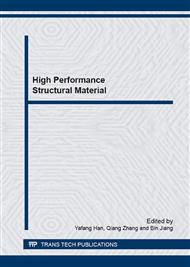p.540
p.546
p.551
p.557
p.562
p.567
p.572
p.578
p.581
Interface Reaction between Ti3Al-based Alloy and Oxide Mold
Abstract:
Ti3Al based alloys are light and high-temperature materials, having potential wide applications in the aerospace and the aeronautical industries. Molten Ti is lively, and it is easy to react with the mold material during in the investment casting, and hence to form casting defects such as α contaminated layer in the metal near the surface and gas porosity, resulting in the deterioration of the surface quality and castings mechanical properties. Therefore, the mechanism of interfacial reaction between Ti3Al-based alloys and mold is necessary to study. In this paper, the interface reaction samples of Ti-24Al-15Nb-1Mo alloy and ZrO2 (Y2O3 stabilized) mold were prepared by actually investment casting. Optical microscopy, SEM, EMPA and micro-hardness tests were used to study the microstructures at metal side of interface, consider the element distribution and discuss the interfacial reaction mechanism. The results show that there is interface reaction between Ti-24Al-15Nb-1Mo alloy and ZrO2 (Y2O3 stabilized) mold, and it belongs to the typical bilateral diffusion reaction. The elements of Zr, Y, O diffuse into molten metal, at the same time, the matrix elements spread to the oxide mold, then form interfacial reaction layer. It has been found that the interfacial reaction was not uniform in the whole interface. In the thick-wall of castings, the interfacial reaction layer was thicker, and in thin-wall, the interfacial reaction layer was thinner.
Info:
Periodical:
Pages:
562-566
Citation:
Online since:
April 2015
Authors:
Price:
Сopyright:
© 2015 Trans Tech Publications Ltd. All Rights Reserved
Share:
Citation:


